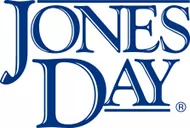- within Environment topic(s)
- with readers working within the Business & Consumer Services and Pharmaceuticals & BioTech industries
- within Strategy topic(s)
On May 22, 2025, the EU Commission adopted an implementing regulation to the EU's Deforestation Regulation ("EUDR") in which it identified the risk classification of countries as "low, standard or high risk" required under the EUDR. The implementing regulation's country classification list is available here.
The practical relevance of the classification is significant. Companies having to comply with the EUDR benefit from simplified due diligence obligations if the relevant product or commodity comes from a low-risk country. Further, the level of compliance checks to be performed by the EU Member State's authorities, responsible for the enforcement of the EUDR, also depends on the risk classification (1% for low-risk countries, 3% for standard-risk countries, and 9% for high-risk countries).
The only countries that have been classified as "high risk" are Belarus, Myanmar, North Korea, and Russia. All EU Member States, the U.S., the UK, Canada, China, Japan, Australia, South Africa and many others have been classified as "low-risk" (a total of 140 countries). All other countries have been considered "standard risk".
Some EU Member States (including Germany) continue to push for a "no risk" category under the EUDR.
All 27 EU countries have dodged the "high risk" label under the bloc's own anti-deforestation regulation, in a long-awaited classification unveiled by the European Commission today.
The content of this article is intended to provide a general guide to the subject matter. Specialist advice should be sought about your specific circumstances.



